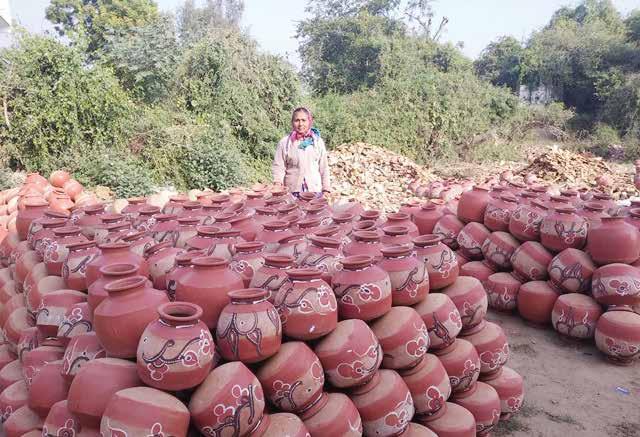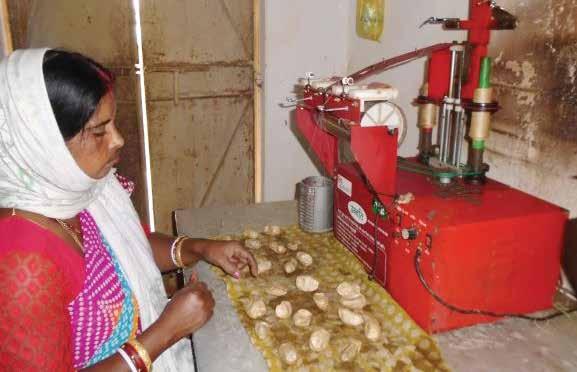43
TABLE 10 :Artisans and their average productions
Artisans category Approx. number of households
Average volume of production per day (qtl)
Average monthly production (qtl)
Small artisan (brass utensils)
35
0.6 to 0.70
9–10
Medium artisan (brass and bronze utensils)
150
0.75 to 1
10–15
Large artisan (brass utensils)
35
1.5 and above
18 and above
Total
220
Production process The artisans use mostly two different alloys for making utensils, namely brass and bronze. Copper is the major raw material while zinc and tin are mixed in different proportions to make brass or bronze, respectively, depending on the type of utensils to be produced. The production process of brass and bronze utensils involves melting, casting, rolling, cutting, beating, etc., to provide the desired shape of the utensils. Thereafter, the products go through finishing processes, such as grinding, buffing, and polishing, after which they are ready for market delivery.
Energy consumption Copper smelting and casting processes are highly energy intensive; hence, they can be economically viable and affordable only if conventional fuels and local technologies are used. Brick or clay-based furnace (bhatti) and sand or clay-based casting moulds are the local technologies adopted, hence, do not need much financial investment. Grinders and buff machines (scrapping and polishing) are used in finishing, which run on diesel generators, and thus provide scopes for solar intervention. While the large artisans have more machines that need more power, the home-based small and medium artisans have a few machines, thus require less motor power.
The cleaning and finishing process of making brass products offers scope for introducing energyefficient technologies. The production units do not use grid electricity due to lack of reliability and affordability, hence are dependent on diesel generators. The cluster has immense potential to replace diesel generators with cleaner, reliable, and affordable energy systems, such as solar PV systems.
Design of solar PV The present loads for small, medium, and large artisans are around 0.75 kW, 1.5kW, and 7.5kW, respectively. Keeping these factors in mind, solar PV systems were designed by considering operating hours and their schedule of operation of different brass artisan units along with the provision of additional power backup of at least 3 hours for rainy or cloudy days. The proposed solar PV capacities include 1.0 kWp, 2.0 kWp, and 5.0 kWp for small, medium, and large artisan units, respectively. The proposed system is a solar hybrid version for small and medium artisans and standalone for large artisans. While designing the solar system for all these three categories, the following assumptions or parameters were considered:






